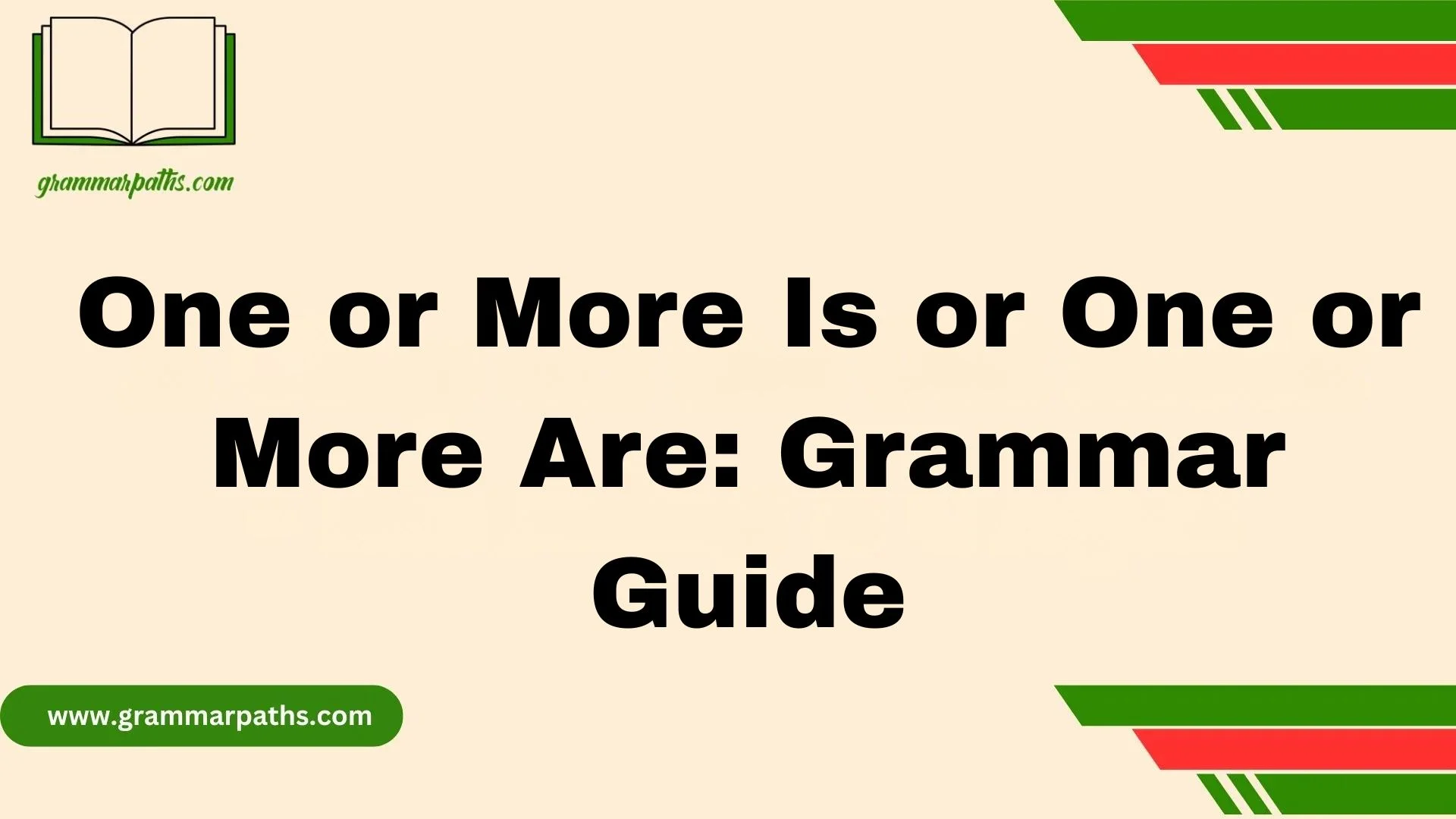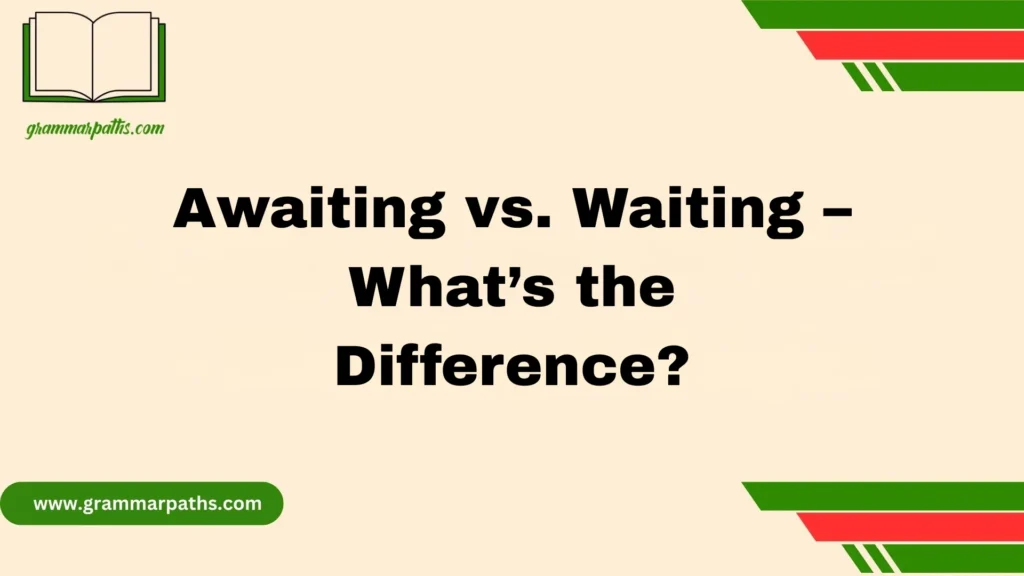When I resume a legal document or edit a blog post, I sometimes feel hesitation when deciding if one or more is or are the correct form. In my own work on “One or More Is or One or More Are: Grammar Guide,” I’ve seen even seasoned writers hit a wall mid-sentence, whether in casual settings, corporate memos, or academic writing. A phrase may pop into social media captions or technical reports, and regional differences between British and American English often complicates things. Knowing how to read and interpret phrases, using grammar guides, and learning from expert opinions and respected grammarians has helped me cut through confusion.
I personally lean on AI tools like Grammarly and Word for clarity, but I still weigh each choice against reliable insights from evolving language trends and corpus data. My practical method includes a checklist: decide the natural, precise style that fits the real-world writing task—formal pieces that aligns with professional standards or tiny stall moments that even skilled communicators face. The process of checking examples, reviewing advice, and ensuring choices match the context makes the result smooth. Mastering tricky small details can make a big difference, and rules exist for a reason—to stop them from confuse even fluent speakers.
In my own topic experience, there’s no exception to the common debate that trips many. Some use a minor detail with the power to change the meaning of a sentence, sometimes without the audience noticing. I’ve received popular queries on learning websites, where the answer is rarely straightforward. Still, with hope, understanding, and logic, I aim to sharpen grammatical accuracy and boost confidence in writing and speaking. Whether I’m paused with pen in hand or fingers on keys, wondering alone how to shed light on the conundrum, the key is choosing between “is” or “are” depending on the noun that follows. If it’s singular—like one more person coming to the meeting—use “is.” If plural—like one more people coming to the meeting—use “are.” This helps in uncertain quantity cases, as long as you grammatically remember to match the verb to the noun that comes after for clear communication.
Why the “one or more is/are” dilemma matters
You’ve probably encountered both forms—maybe in a school assignment, business report, or even a casual email. And you wondered, Which one is right?
This isn’t just nitpicking. Your readers notice. A slip can make your writing seem unpolished. And in high-stakes settings—from academic papers to legal documents—precision matters.
So let’s fix the confusion for good.
Subject–Verb Agreement in American English
Before we tackle “one or more,” let’s revisit the basics:
- Subject–verb agreement means the verb must match the subject in number: singular subjects need singular verbs, plurals need plural verbs.
- Sure, there are exceptions (collective nouns, indefinite pronouns, inverted sentences). But overall, this rule proves reliable across contexts in American English.
Dissecting “one or more” grammatically
Here’s where things get interesting:
- “One” is singular, no doubt about that.
- “More” suggests plural.
- When they join with “or”, you end up with a compound subject—“one or more”—and that duality is what trips us up.
Let’s see how that plays out:
| Phrase structure | Interpretation |
| “One or more [singular noun] is…” | Treat “one or more” as singular |
| “One or more [plural noun] are…” | Treat “one or more” as plural |
| “One or more of the [plural noun] are/is…” | Matches noun after “of” |
Examples:
- “One or more student is expected to submit the form.”
- “One or more students are expected to submit the form.
Which one fits? We’ll explore how to decide in a moment.
Rules for Singular vs Plural Usage
Let’s get granular:
When “is” works best:
- You’re focusing on the single unit—“one”.
- Even if more could happen, your sentence hinges on one example.
- Formal tone—like legal or academic writing—often leans singular for precision.
When “are” shines:
- You emphasize the possibility of multiple items.
- “More” takes the spotlight.
- In conversational or less formal contexts, plural often feels more natural.
Grammar sources back this up:
- Chicago Manual of Style (CMOS): Treat “one or more” as singular if referring to the first noun, but if the noun is clearly plural, match accordingly.
- Merriam-Webster’s Dictionary of English Usage: “The logic may seem tricky—but writers can match to what they expect the reader to interpret.”
What U.S. Grammar Authorities Say
Here’s how top American style guides advise handling “one or more”:
- Chicago Manual of Style: Prioritize clarity. If the noun is unambiguously plural and the emphasis is on “more,” go plural. Otherwise, use singular.
- AP Stylebook: Keep it simple—match the verb to the subject closest in the sentence.
- Garner’s Modern English Usage: Recommends matching the verb to the noun itself, not to the “one or more” phrasing.
British English can differ:
- British authorities often lean more flexibly plural, especially in informal usage.
Knowing these perspectives helps you choose what fits your audience and tone.
Context Is Everything
Let’s peek at how context shifts your verb choice.
Formal writing (reports, research, legal docs)
- Writers often choose singular, to stay safe and precise
“One or more witnesses is required to testify.” - It sounds official, tight, unambiguous.
Informal writing (emails, blogs, conversational tone)
- Plural tends to feel smoother and more conversational
“One or more team members are coming to the meeting.”
Pro tip: Let context guide your instinct—and always prioritize clarity for your reader.
Real-World Examples
Nothing beats learning from real usage. Here’s what American media, academia, and fiction show:
- National newspapers (e.g., The New York Times) often lean singular in formal headlines or reportage.
- Peer-reviewed journals usually use singular, reflecting technical precision.
- Legal documents often standardize on singular, then add clarifications like, “…is required. If more than one applies, all such individuals are responsible.”
Common Mistakes and Misunderstandings
Let’s debunk a few traps:
- Misstep: Using are automatically because “more” feels plural.
→ But if your emphasis is on “one,” singular often makes more sense. - Opposite mistake: Defaulting to is even when “more” clearly dominates.
→ Results in awkward phrasing—your sentence might feel twisted. - Confusing with similar structures:
- “More than one…” always takes singular: e.g., “More than one person is needed.”
- “One of the…” also uses singular verb: “One of the boxes is missing.”
- “More than one…” always takes singular: e.g., “More than one person is needed.”
Decision-Making Made Easy: Step-by-Step Guide
Follow these steps when you hit “one or more” in your writing:
- Identify the noun following “one or more.”
- Ask yourself: Am I focusing on the single instance or the multiple?
- Match the verb to what’s more logical:
- If the noun or context suggests singular, write is.
- If plurality dominates, go with are.
- If the noun or context suggests singular, write is.
- Read it aloud. Does it feel natural?
- When in doubt, choose clarity. And consider rephrasing:
- Instead of “One or more applicants are/is required,” write “At least one applicant must apply.”
Summary Table
| Situation | Correct Form | Example |
| Singular focus, formal tone | is | One or more participant is expected at the summit. |
| Plural emphasis, informal tone | are | One or more participants are waiting outside. |
| Complex legal/academic | is, with clarification | One or more employees is responsible, and if more apply, all are accountable. |
| Comparative phrases | Singular (always) | More than one option is available. |
Case Study: Clarity in Action
Scenario: A university sends guidelines to students:
- Original: “One or more students are required to attend the orientation session.”
- This could read as plural, assuming multiple students.
Better:
- “One or more students is required to attend the orientation session.”
→ Emphasizes that each student individually must attend.
Or, to eliminate confusion entirely:
- “At least one student must attend the orientation session.”
→ Cleaner, clearer, removes the “one or more” headache.
Quotes from the Pros
“The verb should agree with the noun closest to it—if that noun is plural, use a plural verb.”
— Associated Press Stylebook
“When “one or more” precedes a plural noun and the sense leans plural, a plural verb often reads best. Don’t get stuck on grammar rules—choose clarity.”
Conclusion
In grammar, even small details like whether to use is or are after one or more can shape the clarity and professionalism of your writing. While rules guide us, real-world writing often demands flexibility and awareness of context. By combining expert advice, grammar tools, and practical experience, you can confidently make the right choice for your audience—whether in formal documents, casual communication, or anything in between.
FAQs
Q1: Which is correct, “One or more is” or “One or more are”?
Both can be correct depending on the noun that follows. Use is with singular nouns and are with plural nouns.
Q2: Why do some writers use “is” even with plural nouns?
This usually happens in informal writing or when the writer focuses on the singular part of the phrase one rather than the overall plural meaning.
Q3: Does British English or American English change the rule?
The main rule is the same, but usage trends can vary slightly between the two. British English tends to be more flexible with verb agreement in collective phrases.
Q4: Can I rely on grammar tools like Grammarly for this?
Yes, but always double-check the suggestion in context. Grammar tools can help but may not account for every nuance of your sentence.
Q5: How can I remember which one to use?
Look at the noun immediately following one or more. If it’s singular, use is; if it’s plural, use are.

Emma Brooke is a passionate language expert and contributor at GrammarPaths.com, where she helps learners navigate the complexities of English grammar, idioms, and effective writing. With a strong academic background and years of teaching experience, Emma excels at turning tricky grammar rules into simple, practical lessons that readers can easily grasp.










